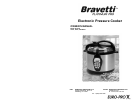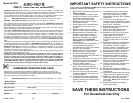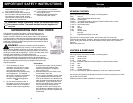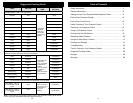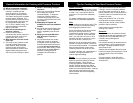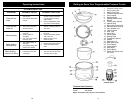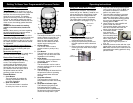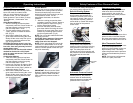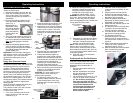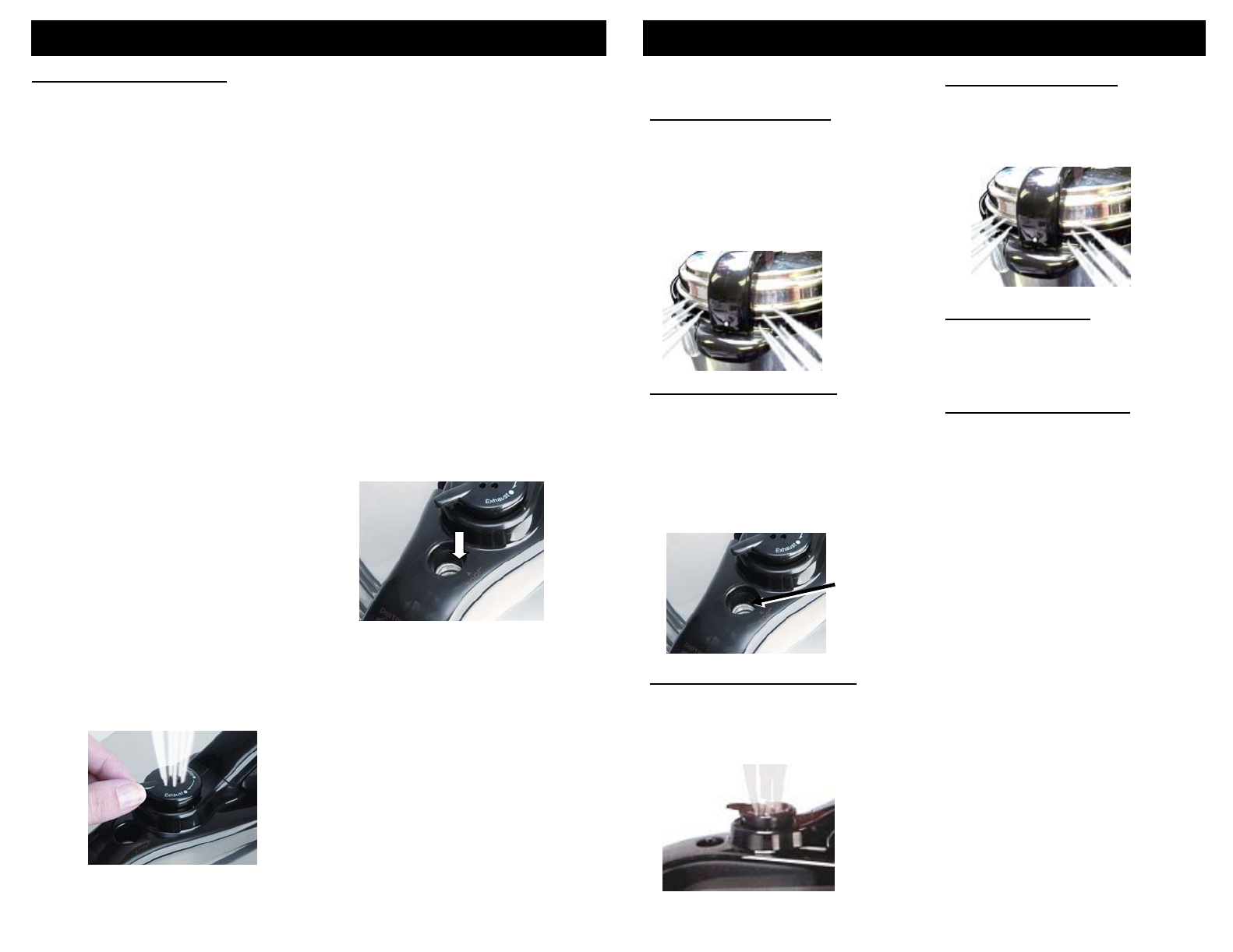
Operating Instructions
Safety Features of Your Pressure Cooker
Releasing Steam Pressure
WARNING: Use extreme caution when
removing the cover after cooking. Serious
burns can result from steam inside.
After you have finished cooking in your
pressure cooker, you can release the
steam pressure in one of three (3) ways,
“Quick Release”, “Combination” and
“Normal”.
Quick Release Method:
1. After the cooking process has been
completed, press the “Cancel” button to
stop the pressure cooker from going
into the “Keep Warm” mode.
2. Turn the steam release valve to the
“Open” position to release the steam
fast. (Fig. 8)
3. Wait until the safety float valve has
gone down before removing the cover.
Always lift the cover away from you to
release any remaining steam so that
you do not get burned.
CAUTION: Escaping steam is very hot.
To avoid serious injuries or burns, keep
bare skin, face and eyes away from the
steam release valve.
CAUTION: Do not use the quick release
method for foods with a lot of liquid
such as soups and sauces. There could
be an overflow.
Combination Method:
1. After the cooking process has been
completed, press the “Cancel” button to
stop the pressure cooker from going
into the “Keep Warm” mode.
2. Let the unit cool down for approx. thirty
(30) minutes and then turn the steam
release valve to the “Open” position to
release the steam. (Fig. 8)
3. Wait until the safety float valve has
gone down before removing the cover.
Always lift the cover away from you to
release any remaining steam so that
you do not get burned.
Normal Method:
Allowing the steam to release naturally is
preferred when cooking foods like stocks,
sauces and certain large cuts of meat
which will benefit from continuing to cook
in the pressure cooker. As the
temperature decreases, so does the
pressure.
1. After the cooking process has been
completed, press the “Cancel” button to
stop the pressure cooker from going
into the “Keep Warm” mode.
2. Wait until the safety float valve has
gone down before removing the cover.
Always lift the cover away from you to
release any remaining steam so that
you do not get burned. (Fig. 9)
NOTE: Do not use this method with foods
that easily overcook.
CAUTION: Never attempt to force open
the pressure cooker cover until the
safety float valve has dropped.
NOTE: Since overcooked food cannot be
corrected, it is almost better to err on the
undercooked side by cooking an unfamiliar
food for a shorter period of time than you
may think necessary.
To ensure user safety, this appliance
has several safety features built-in.
Safe Lid Closing System
This pressure cooker is equipped
with a feature that prevents any
increase in pressure if the cover is
not properly closed. If the cover is
not positioned correctly, pressure
cannot build-up. Steam will escape
from the sides of the pressure
cooker cover.
Depressurizing Control
If for any reason the auto pressure
relief valve does not function and
pressure builds, the cooker will
automatically vent excess pressure
from around the lid.
Thermostat Control
When the internal temperature of the
pressure cooker increases beyond
the preset temperatures, the power
to the pressure cooker will be cut off.
Safe Lid Opening System
This appliance is equipped with a
safety feature that prevents the
pressure cooker cover from opening
if the pressure in the cooker is too
high. The safety float valve will
prevent the cover from opening until
the pressure has been released from
the cooker and the valve has
dropped.
Ultra Thermostat Control
There is a fail safe sensor that is set
to trip if the temperature and
pressure in the pressure cooker are
beyond safety limits. This safety
system de-pressurizes the pressure
cooker and terminates the power to
the unit.
NOTE: If this occurs, call customer
service at 1 (800) 798-7398.
Safety Float
Valve
Fig. 9
IMPORTANT: Do not use the “Quick
Release” method with foods such as
legumes, grains or other foods that
froth or when the pressure cooker is
very full.
Automatic Pressure Control
If the pressure cooker has built up
excess pressure, the pressure
release valve will automatically
discharge steam to regulate safe
pressure limits in the cooker.
Fig. 8
7
10



